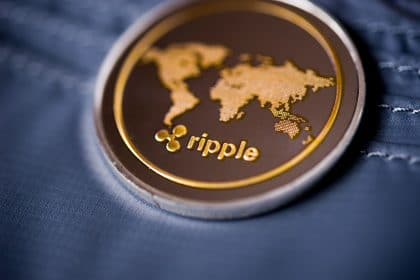[ad_1]
The patent presents interesting use cases for data transactions between the Ripple ecosystem with the outside world. It also provides a new opportunity for Ripple to develop interesting smart contract apps for tangible and as intangible assets.
On Friday, October 2, San Francisco-based blockchain startup Ripple Labs added yet another feather to its cap. The United States Patent and Trademark Office (USPTO) granted Ripple Labs the patent for a smart contract design that collects data from the outside world using oracles.
The patent is a milestone achievement for Ripple and the blockchain community to connect a distributed platform with outside real-world data. The original filing of the patent dates back to June 2018. Furthermore, the USPTO document attributes the patent to former Ripple CTO Stefan Thomas and Evan Schwartz, the co-creator of Interledger protocol.
Currently, the Ethereum blockchain network dominates the smart contract ecosystem. A number of decentralized applications (DApps), and much recently decentralized Finance (DeFi), use smart contract to execute outcomes for a pre-defined condition.
Possible Use-Cases of Ripple Smart Contract Patent
The Ripple patent goes to note that the systems presented can also be used for “Value Transfer”. The transfer can include tangible as well as intangible assets upon meeting the smart contract conditions. The Patent notes:
“… It can involve a transfer of value such as, for example, an asset, a service, refraining from engaging in an allowed activity, or any combination thereof. The asset can be tangible such as, for example, a good, money, and the like. The asset can also be intangible such as, for example, a share of stock, a bond, an ownership interest, a derivative, a future, an option, a swap, a contract, a lease, a license, intellectual property, digital currency, cryptocurrency, virtual currency, and the like”.
The Ripple patent presented some interesting use cases like use of smart contracts to execute options contracts. Another interesting example is the oil industry. Feeding crucial data on the density of crude oil shipment thus helping smart contracts determine the execution of the trade.
Previously, Stefen Thomas was also working on the Codius system to rival Ethereum. Codius aimed at providing a bridge between XRP and other cryptocurrencies for data transactions. Unfortunately, Ripple abandoned the project citing technical and fundamental difficulties. Later, Thomas also parted ways with Ripple to work for his own company Coil.
Now, after winning the patent, it’s not sure if Ripple will bring this project back to life. Or optimistically, Ripple might take this opportunity to create smart contract applications for the now booming DeFi space.
Ripple is already working out a way of using XRP with smart contracts. Last year, Ripple’s investment arm – Xpring – invested in Flare Networks. Flare CEO Hugo Philion said that the platform launch will happen this year in December 2020. The launch will first intend to bring smart contracts to the XRP Ledger. This will make Ripple interoperable with other blockchain networks.

Bhushan is a FinTech enthusiast and holds a good flair in understanding financial markets. His interest in economics and finance draw his attention towards the new emerging Blockchain Technology and Cryptocurrency markets. He is continuously in a learning process and keeps himself motivated by sharing his acquired knowledge. In free time he reads thriller fictions novels and sometimes explore his culinary skills.
[ad_2]
Source link

